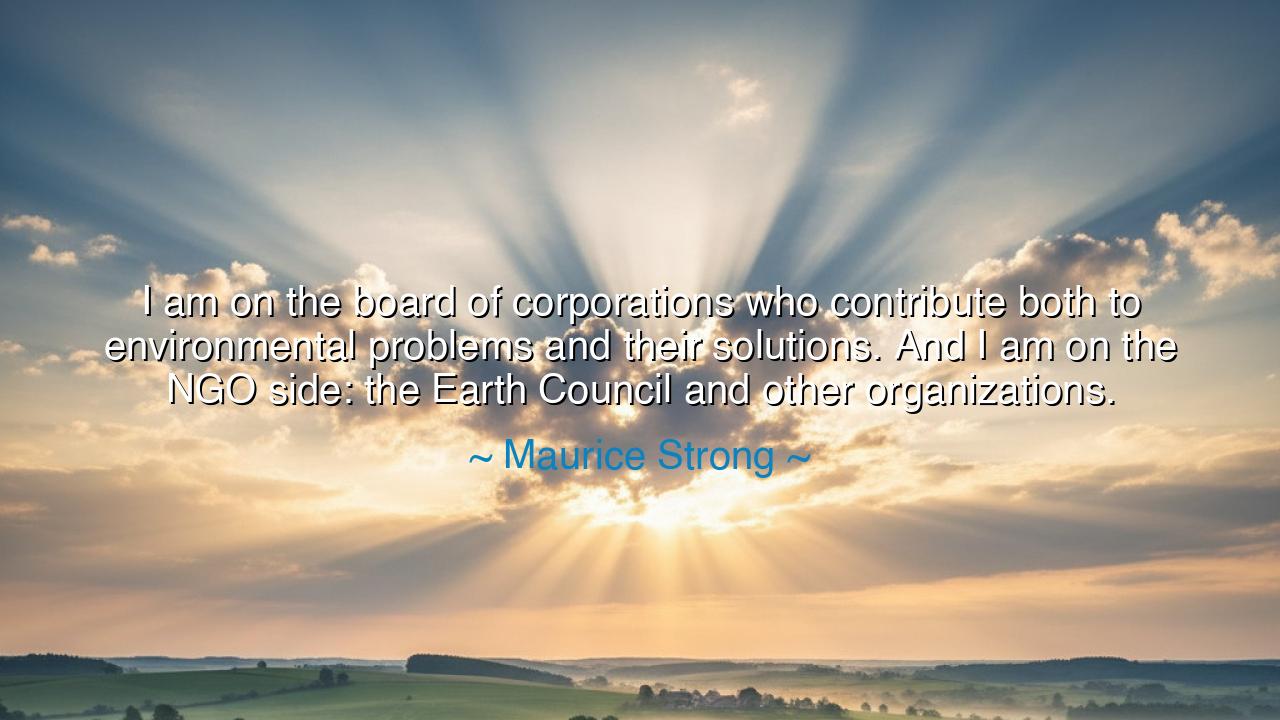
I am on the board of corporations who contribute both to
I am on the board of corporations who contribute both to environmental problems and their solutions. And I am on the NGO side: the Earth Council and other organizations.






Maurice Strong, the architect of many of the world’s environmental movements, once spoke with the candor of a man who had walked in two worlds: “I am on the board of corporations who contribute both to environmental problems and their solutions. And I am on the NGO side: the Earth Council and other organizations.” His words are neither excuse nor boast, but confession and testimony. They reveal the paradox of modern life: that the same engines which wound the earth may also, if guided, help to heal it.
The meaning of this statement lies in the recognition of complexity. Strong admits that corporations, in their pursuit of profit, often create environmental problems—pollution, deforestation, carbon emissions. Yet he also points out that these same forces, wielding vast resources, can become part of the solutions. To serve on their boards is not to deny their faults, but to bring influence into their halls, to redirect the power of industry toward healing rather than harm. In this tension lies the essence of Strong’s life’s work: to stand at the intersection of commerce and conscience, bridging them rather than abandoning one for the other.
The origin of this insight comes from Strong’s unusual path. He was both an oil executive and the founding Secretary-General of the 1992 Earth Summit in Rio. Many saw contradiction, but he saw opportunity. He understood that to change the world, one must engage both the grassroots—the NGOs, the citizens, the activists—and the boardrooms where decisions about energy, trade, and growth were made. His work with the Earth Council symbolized his effort to keep both sides in dialogue, forging alliances between the power of money and the power of morality.
History offers us a clear echo of this dual path. Consider Theodore Roosevelt, once a hunter of big game, who came to see that the wilderness of America was vanishing. Though once part of the problem, he used his presidency to establish national parks, forests, and monuments that preserved vast lands for future generations. Like Strong, he understood that influence gained in one realm can be turned toward higher ends. Both men show us that one can begin with industry or even exploitation, yet still awaken to become a guardian of the earth.
There is something deeply emotional in Strong’s statement, for it carries the weariness of a man who knows imperfection, yet still chooses engagement over withdrawal. It would be easy to condemn corporations from afar or to abandon them as lost causes. But Strong took the harder road: to enter the chambers of power, to confront their failings, and to press them toward change. His words remind us that solutions often arise not from purity, but from the messy struggle within flawed systems.
To future generations, his testimony offers both warning and guidance. The warning: beware of the harm done by unchecked corporate greed. The guidance: do not despair, for even the greatest contributors to destruction can, when transformed, become allies in renewal. The fight for the planet cannot be waged only by the pure and the righteous; it must also involve those with resources, influence, and reach. This is the hard truth of change: that it demands compromise, dialogue, and persistence.
The lesson is this: do not flee from the places where harm is done—enter them with courage, and bend them toward good. Practically, this means holding corporations accountable, demanding transparency, and supporting NGOs that partner with industry to create lasting solutions. It means remembering that influence is a weapon, and it must be wielded wherever it can do the most good. For the earth does not ask us for perfection, but for action.
Thus Maurice Strong’s words endure: “I am on the board of corporations who contribute both to problems and solutions… and I am on the NGO side.” Let us not dismiss this paradox, but embrace its wisdom. For in every age, the battle for justice and survival is fought not in one camp alone, but on many fronts. And those who stand in the middle, carrying voices from both sides, often bear the heaviest burden—and yet, perhaps, the greatest hope.






AAdministratorAdministrator
Welcome, honored guests. Please leave a comment, we will respond soon